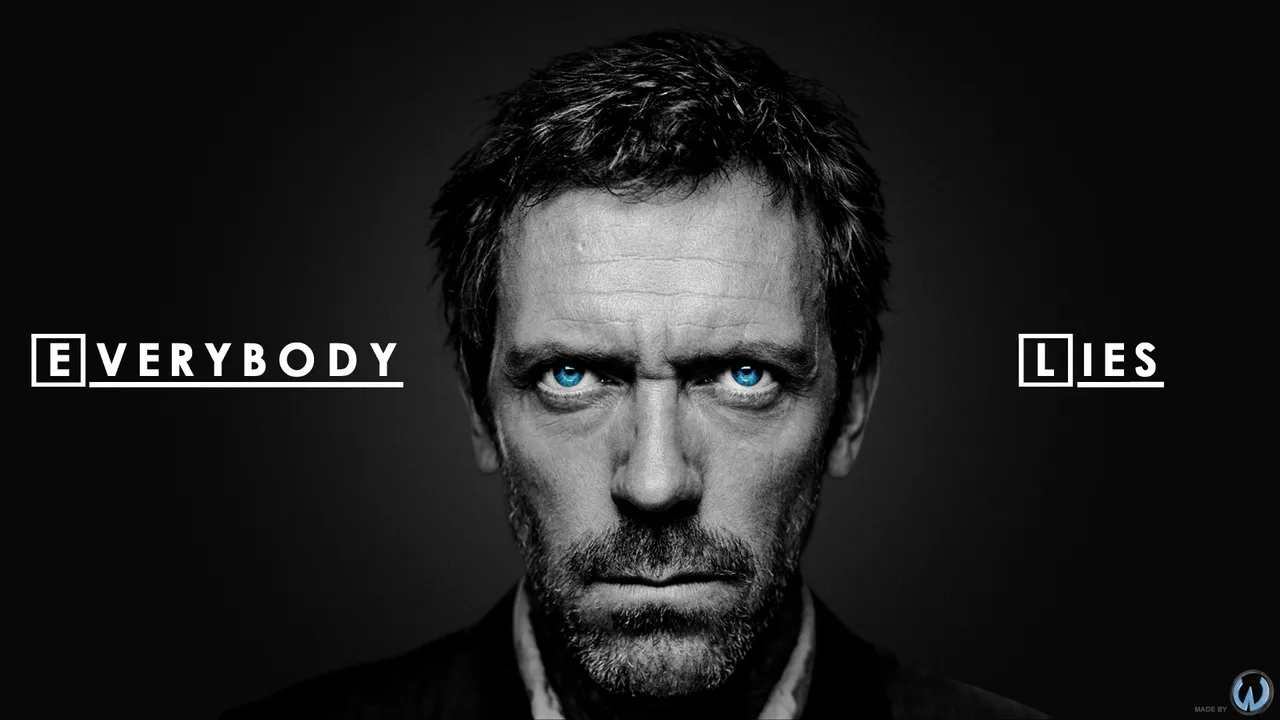
How long have I been out of commission?
Not gonna say. How many months have I neglected Hive blogs, Steemit, book reviews, #freewriting, and more? Meh. Suffice to say, it was Another Migraine Summer, worse than my usual.
Brain fog, clumsiness, dizziness (vertigo), chronic neck-head-shoulder pain, a reputation as a ditz, and a new diagnosis after 50 years: vestibular dysfunction. My right ear is a train wreck (likely the work of some virus in childhood), and my brain hasn't learned to tune out the "fake news" sensory input from my 36% functional right ear. My dad, without any medical assistance, learned to see with only one eye, but I never learned to compensate with one working ear.
Related to that, or not, is a lifelong history of headache. It's been a long, arduous journey, and I still don't feel like talking about it, but I'll start with some book reviews.
Years ago an ENT told me all headaches are migraines, not sinusitis. He didn't mention whatever book he got that from but I found it on Amazon and allegedly bought it in 2004 but the order didn't go through. Ok. Maybe I took one look at the cover and said Uh-uh.
Heal Your Headache: The 1-2-3 Program for Taking Charge of Your Pain by David Buchholz and Stephen G. Reich
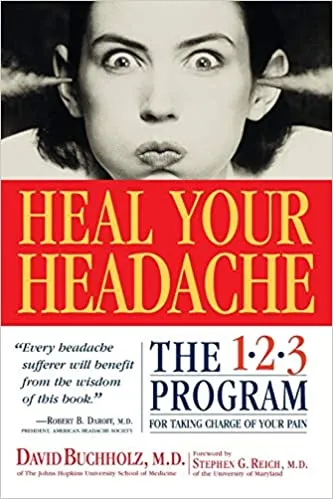
Judging NOT by the cover, I bought a paperback copy last week, and I'm reading it now. I'm finding companion websites and blogs, e.g. The Dizzy Cook who advises us to hit #VestibularMigraine from all sides: implement diet, supplements, exercise, preventative meds, daily sleep routine, hydration, relaxation strategies, and other natural remedies, and join the Facebook group Migraine Strong (I did). Heal Your Headache (HYH) - the diet, the book - is often cited at this FB group.
When I first began researching migraine and the migraine diet more in depth, I found everyone kept recommending the Heal Your Headache migraine diet from this book, Heal Your Headache – The 123 Program for Taking on Your Pain. I finally ordered it on Amazon and it was 10x more helpful than the majority of doctor visits I had experienced over the past year.
Allergy, infection, and structural abnormality are the usual culprits an ENT will blame for sinus headaches.
Over the years, so-called sinus headache sufferers are treated with innumerable courses of antihistamines, decongestants, steroid sprays, antibiotics, allergy shots, sinus irrigation and sinus surgery. Yet...despite treatment failure, the stubborn myth (and misdiagnosis) of sinus headache lives on, and the real problem--migraine--goes unrecognized and untreated.
It looks something like this:
Chapter Seven addresses the long road of X rays, CT scans, and MRIs that doctors use to misdiagnose us and waste our time and money.
Dr. David Buchholz, a neurologist, seems to disparage ENTs who think sinus issues can relate to the inner ear, and he dismisses most sinus surgeries as a waste of time and money. I'm surprised an ENT told me my sinus issues were migraines when he could have tried selling me on the usual surgical protocols. Ha--20 years later, that ENT who handed me off to a Neurologist From Hell is back to cutting people's sinuses after all, and I'm on a hopeless quest to find a specialist who knows anything worthwhile about the migraine mechanism and the need (imagined or real) for Roto-Rooter plumbing methods inside our heads.

Roto-Rooter, founded in 1935, originally specialized in clearing tree roots and other obstructions from sewer lines.

#ENT (ear, nose and throat), aka #otolaryngology, "also treats problems in related areas of the head and neck" - ordering CT-scans and MRIs to rule out concerns such as Intracranial Badness. I kid you not. #IntracranialBadness sounds like a death metal rock band, as Dave Barry might say.
But the tests and procedures help only if you can find a medical professional who isn't trained to think like a plumber. Clearly, one neurologist thinks outside the box - this author, Dr. Buccholz - who seems to be ignored by the medical profession, and millions of patients who lack the willpower to try out the horrible Heal Your Headache diet.
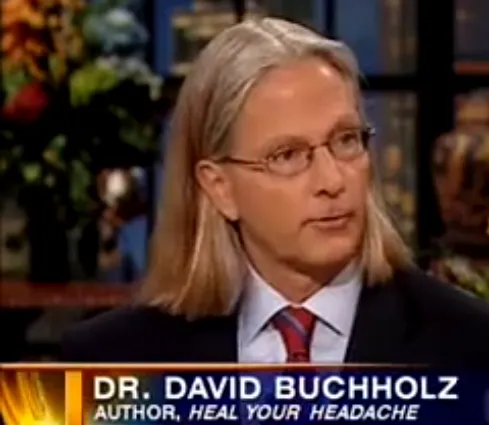
Canned soda, I can easily give up.
Onions. Bananas. Oranges. Ok, fine.
But the list of things is SO LONG, I won't even show it here.

https://www.dailymotion.com/video/x34oyi1
Let's cut to the chase:
Take as little medication as possible – "the diet is the most valuable tool you have,”
the sadist says. I mean, the guru. He's right, you know.
He is right about food triggers and millions of misdiagnoses.
Recognizing and #GivingUp trigger foods can lower your migraine threshold. Some migraine triggers are beyond our control --stress, bright lights, loud noises, and weather changes -- but what we eat is something we can control. It's a difficult choice, but give it six weeks, and most people who try ithave to admit they feel better without their coffee, wine, chocolate, cheese, nuts, and other indispensable "Never Will I Give It Up!" foods and beverages.
The list of triggers is truly daunting. Healthy foods are on the list: yogurt, kefir, apple cider vinegar (all vinegar except distilled white), nuts, nut butters, canned salmon, tuna, and other processed fishes and meats, and--meh.
MSG is 'everywhere' - read the labels - also watch for nitrates, nitrites, aspartame, Nutrasweet and more. Oh, and caffeine, chocolate, red wine, cheese, citrus, etc. Bring on the broccoli, kale, salmon, and "safe" fruits. I'm still in denial, still mourning the many foods I've already given up.
I want to go outside, pull some weeds, deadhead some flowers, inhale countless pollens and allergens, soak up some sun, and ... ok, before I go, I'll try to say more about the Heal Your Headache book. Dr. Buchholz discusses the usual migraine Rx "quick" fixes: triptans (Imitrex, Relpax, Zomig), caffeine containing analgesics (Excedrin, Vanquish, Midol, etc.), and opioids. All can cause rebound if used several times a month, perpetuating the migraine cycle.
Then again, once we lower our threshold with the HYD diet, we may need to "maintain" it with Rx pills such as nortriptyline, this doctor says.
Do you want to see the list of side effects for that pill?
Didn't think so.
But if you do wanna know: https://www.rxlist.com/consumer_nortriptyline_pamelor_aventyl/drugs-condition.htm
Forget Food Triggers and Pills with 10-page-lists of Side Effects; let's look at
Easy Breathing tricks!
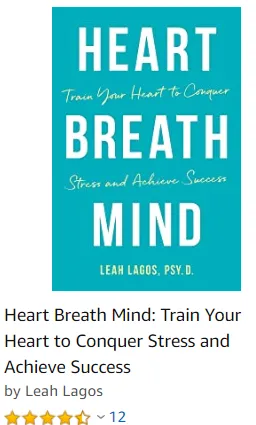
In Heart Breath Mind, Dr. Leah Lagos
prescribes a 10-week program of simple, drug-free, cost-free, easy "resonance breathing" techniques.
With cognitive-behavioral exercises and a chapter on the need to resolve old trauma that lingers in our bodies, she shows us how to let go of negative thoughts and emotions, and ultimately be more focused and confident under pressure. Forget the pain-killers and medical procedures: you can feel better with a few minutes of simple breathing exercises, twice a day. (Or not so simple: she suggests apps and ways to calibrate our own personal target Heart Variability Rate, and that was just too much math for me, too many numbers. )
Breathe deep. It's as simple as that. Ok, there's actually more to it, but in a nutshell, breathing right is the first step in feeling good and being well. I didn't believe it. I had to put it to the test, and there is no placebo effect here because I totally didn't expect breathing methods to be the answer to a host of maladies. It's almost insultingly obvious and easy.
But it works.
We are born with the ability to breathe right. From the diaphragm. Around age five we get sent to school and are expected to sit still at desks, most of the day. This changes the dynamic. Our diaphragms are restricted. Add to that the all-day lessons and need to focus, concentrate, on the abstract. We start holding our breath. We hold in our feelings, too. Sometimes, believe it or not, we forget to breathe, and we most of us fall into a habit of taking shallow breaths.
How can it cause so much havoc?
Why is it so tiring when we first start practicing diaphragm breathing?
We tend to engage the secondary muscles of throat and chest rather than the deep, "belly breathing" muscles.
This book suggests a ten-week program of twenty-minute sessions, twice a day. No music, no distractions. Admittedly, I have not bothered to download the breathing apps or use metronome-ish devices; I wing it; and I don't find some quiet place with no background musics. I didn't try to find my target HRV (heart rate variability). BUT. But. Starting last fall, thanks to a physical therapist who diagnosed me as a shallow breather (I was outraged, skeptical, but ultimately a convert), I started a less daunting program of five minutes, then ten, twice a day. Breathe in on a count of four; hold four; breathe out on a count of eight. (Military tactical breathing.)I've also watched several You-Tube videos and Ted Talks, all of which have slight variations on this. My therapist has me using yoga moves in combination with the breathing.
Nothing else, NOTHING else (except the Taboo Foods List)--not chiropractors, pills, procedures--has ever helped as much as the breathing exercises have. I've had chronic daily headaches and tension in the neck and shoulders. The breathing lessons were almost embarrassing to me, until I read that 99% of us are breathing incorrectly.
Now I'm coming across references to deep breathing in novels - a heroine has a life coach reminding her to breathe right. A soldier in battle uses the breathing to handle prolonged physical pain. It's becoming a "thing" we all know about - soon we will ALL know about it. So far, I'm not winning converts to the methods. Everyone is a skeptic, it seems.
But it works.
The book is packed full of scientific explanations if you want to know how and why this works. And instructions, if you want to maximize the advantages.
I cannot recommend the concept and practice of deep breathing highly enough - should be mandatory for all medical professionals, all patients, and all human beings to learn! As books go, this one is excellent for the scientific explanations and a precise program to follow, and even if you don't do the steps and calibrate, calculate, record data, and all that, you are sure to find something useful here to get you on the right path.
CONFESSION:
I still have not put into practice the exact methods outlined in this book. However, I've been practicing deep breathing as advocated by my physical therapist, a much simpler method that doesn't involve apps and mathematical calculations of my target HRV (heart rate variability). Instead of lying still for 20 minutes twice a day, I combine the deep breathing with yoga moves (as prescribed by the P.T.).
Still, this book is a gold mine of information, and I'd do well to download that dang app and do the other thing, mentally releasing unpleasant thoughts with the exhale.
Yes. I need to re-read those chapters. Positive Thinking. And how this Deep Breathing method can increase empathy for others and a more peaceful state of mind. I have been agitated during this COVID-19 pandemic and "now more than ever" (to use a phrase I've hated since 9-11), we need to breathe deep and carry on. This book is a great starting place. (And cheaper than a counselor or a shrink.)
And as another reviewer pointed out, the chapter on unresolved trauma is a must-read.
This book by Leah Lagos is comprehensive and packed full of information. If you're skeptical, you might begin with the one breathing exercise a chiropractor recommends neck pain is this:
Lie comfortably on your back with a pillow under your knees. (On a carpet or a bed if need be.)
Roll up a towel for under your neck as support as well.
Place one hand on your upper chest and the other on your belly, just below your rib cage.
Breathe in slowly through your nose, letting the air in deeply, towards your lower belly.
The hand on your chest should remain still, while the one on your belly should rise.
NOTE: do not engage the secondary muscles of the chest and shoulders when you inhale.
Tighten your abdominal muscles. Let them fall inward as you exhale through pursed lips.
The hand on your belly should move down to its original position.
Five minutes, twice a day, then ten minutes, then, maybe, 20 minutes twice a day for ten weeks.
Yoga for Migraine: 10 Poses for Migraine Headache Relief
7 Best Cervicogenic Headache Exercises
Exercises for Vestibular Disorders - Dr Anirban Biswas 
Ok, I'll back up and mention why I've been out of commission all Spring/Summer 2020.
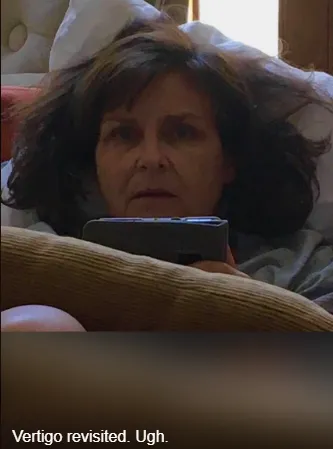
For years whenever vertigo would strike, I'd try out some DIY (Do It Yourself! Alone! At Home! ha ha ha) Epley maneuvers I'd found on you-tube. Yeah. I got away with it, too, and hubris hit me like a hardwood maple floor when it suddenly backfired on me, July 9, and I fell headfirst onto the wood floor, necessitating a visit to E.R. (God forbid; me, resorting to Emergeny Room "care" - truly the world must be coming to an end).
Nope, not gonna talk about the endless E.R. trip.
In my defense (however indefensible my lame-brain moves may be),
This you-tube commenter sounds like me.
About 6 years ago, I completely cured my longtime positional vertigo at home. I had had it for 5 years. If I turned over in bed, I'd feel the slow creep of dizziness, then full EXTREME dizziness, then it would clear in a minute. I studied the Epley maneuver online... I just hung my head completely off the edge of a bed and slowly rotated my head. There was dizziness that came and went. Then I did the maneuver a 2nd time even slower. This time much less dizziness. I did it a third time and no dizziness at all! I have been free from positional vertigo ever since.
Before doing the maneuver at home, I studied one of those diagrams that shows how the ear tubes are laid out. Something like this one:
I got away with it for years, too, as did that you-tuber viewer, until I hurled myself into E.R. and a new series of expensive, useless, maddening medical treatments malpractice.
The careless mistakes (human error) that DOCTORS and NURSES make, however, are even less sensible than mine, because they're TRAINED to know better.
Not gonna tell ya how many ways my follow-up care was delayed ... their staff entering my phone number incorrectly was just one.
Who knew MRIs are so loud they have ya wear earplugs? Sounded like jackhammer at a construction site. And a common side effect of the MRI is.... vertigo!!!!! (Yes, mine was worse. If they offer earplugs, why not a mask for someone whose MRI is for VERTIGO.)
And now you may sneak a peek at my pretty brain. 🤣
Radiologist report: My brain is "unremarkable"
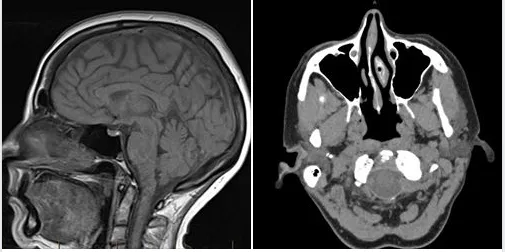
I know when I've been insulted!
It gets worse.
(FYI, "unremarkable" is exactly the diagnosis we want radiologists to find.)
Diagnosis:
I have an "allergic FUNGAL sinus infection" -- and NYSTAGMUS in all directions (up, down, left, right), but I did NOT need the Epley on maneuver at all, much less on both sides. (Four sessions of wasted time and money. I fired that physical therapist.)
The video of my nystagmus was freaky. This youtube video is nowhere near as jiggly. 
Allergic Fungal Sinusitis
Fungal sinusitis is an inflammatory infection of the sinuses caused by certain types of fungi ...allergic fungal sinusitis ... symptoms vary and range in severity from mild to severe.
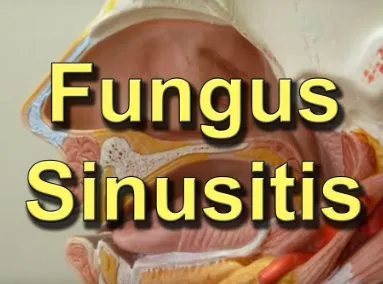
#NeverAskWhatNext because the answer could be ...
⭐Fungus Balls⭐
I kid you not!
....the overgrowth of fungi called fungus balls in normal, healthy people; symptoms mimic a bacterial sinus infection...nasal congestion, postnasal drip, and increased pressure or pain across the sinuses. Affected people may also experience long-lasting or recurrent sinus infections. Source for the techno-jargon and images
What Next?
--Didn't you hear me?
Never ask that question!
But FYI, I did drive four hours one way to a neurotologist in Omaha, who diagnosed "vestibular dysfunction, 36%" of the right ear and prescribed "vestibular rehab" (physical therapy)--and I finally got in with a therapist who knows what she's doing, unlike the dufus who kept repeating expensive nystagmus tests and useless Epley maneuvers, four sessions in row.
Next up: back to Omaha to an ENT who apparently has mastered this Roto-Router routine. He looks a little scary, but "nice" can never be trusted.

Bedside Manner: "not good," reviewers say. Do I care? No. I'll take a Dr. House with the world's worst personality as long as he knows how to diagnose and treat whatever ails me.
What Ails YOU?
Ha. Not gonna go there.
Ditzy, klutzy, Fungus Amongus, Too Many Head Injuries (of course I didn't bore you with those!), nor with that long, dark, awful History of doctors since 1985 diagnosing me "mental", but the Heal Your Headache book corrects that....
Someday I'll be back with reviews of Non-Fiction and who knows, some short stories or freewrites, or, if the Roto Router works, I might salvage some of this awful year known as 2020 and actually publish my novels this year.
We can dream.
Or scheme.
If you want to know more about migraine, this blogger is much more positive, helpful, and informative than I am: The Dizzy Cook

5 Things I Wish Others Knew About Life with Vestibular Migraine by The Dizzy Cook, aka Alicia Wolf

Thank you @Raj808 and @theinkwell,
a fellow medical-malady survivor, and to all the Inkwell staff, @jayna, @shanibeer and @stormlight24, who've been keeping this hive alive while I've been putting forth the least possible effort.





